Handguns never played a pivotal role in World War II, but they were always around hanging in holsters on various hips for situations in which the defecation struck the oscillation at close quarters. That’s enough to prompt an abiding interest among historians and pistol pundits.
Focus is generally on the Big Five: U.S. M1911A1, German P08 Luger, British Enfield No. 2 revolver, Russian TT-33 Tokarev and the Japanese Type 14 Nambu. There’s a whole host of other exotic pistols — Broomhandle Mausers and the very effective German Walther P-38 spring to mind — but it’s that Japanese pistol that has always intrigued me.
Maybe it’s because most of the returning WWII vets who fascinated me with their war stories when I was growing up seemed to have served in the South Pacific. Perhaps it was due to a military career in which I was steeped up to my eyeballs in Marine Corps lore that focused on celebrated battles with Japanese forces from Wake to Okinawa.
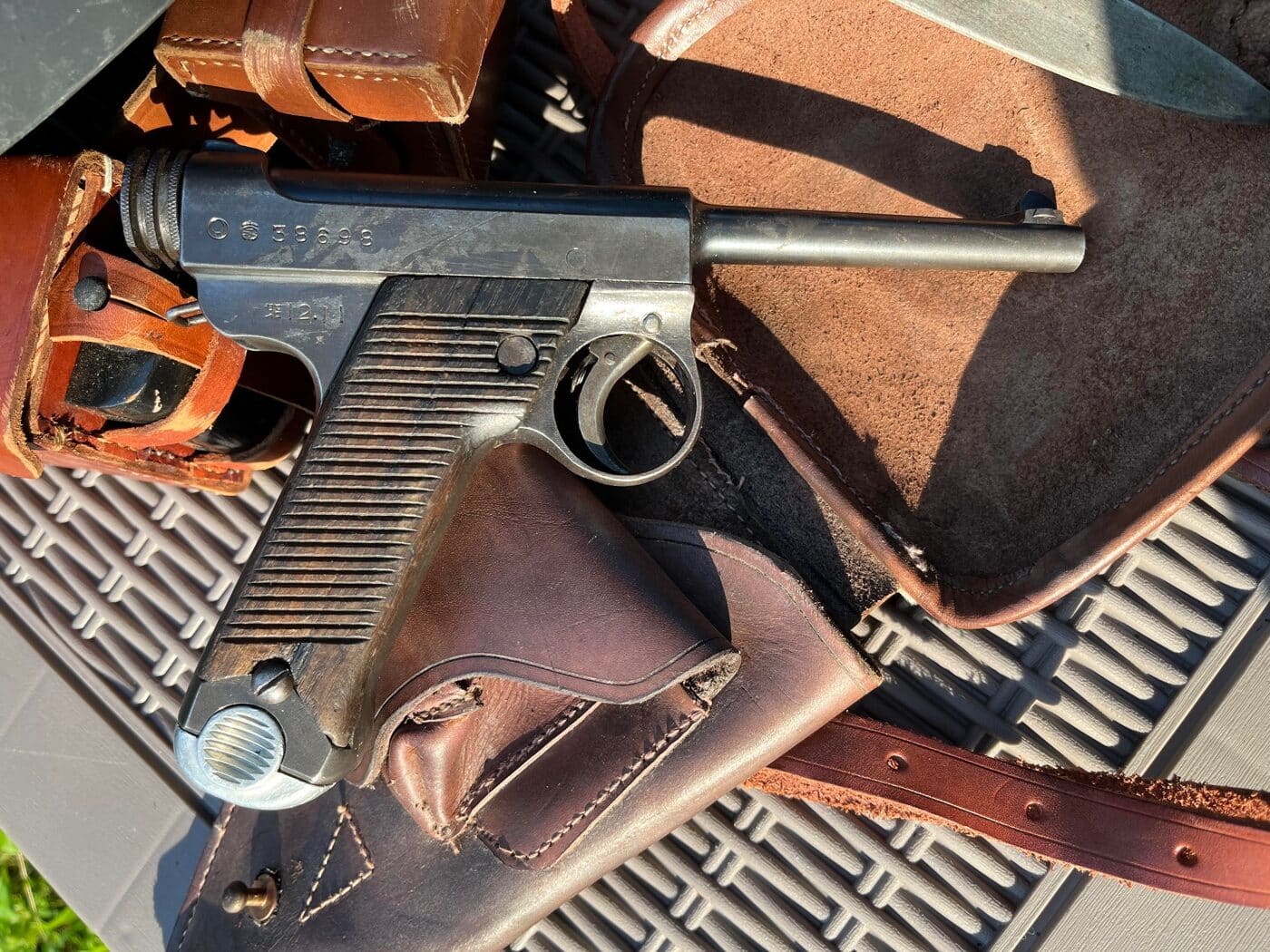
Whatever the impetus, there was just something about the Nambu that riveted me and led to questions about the Imperial Japanese military decision to field an obvious Luger knock-off in a milquetoast 8mm chambering. Why do that when the rest of the world’s significant military forces gave their guys a better last-ditch shot with beefier rounds like .45 ACP or 9mm? Questions like that can lead to a dizzying trip down the research rabbit hole.
Decisions Influenced by Russo-Japanese War
Much of the Nambu design choices — and other less than stellar Japanese wartime weapon decisions — were made pre-war and relate to Japan’s victory over Russia in the Russo-Japanese War of 1904-05.
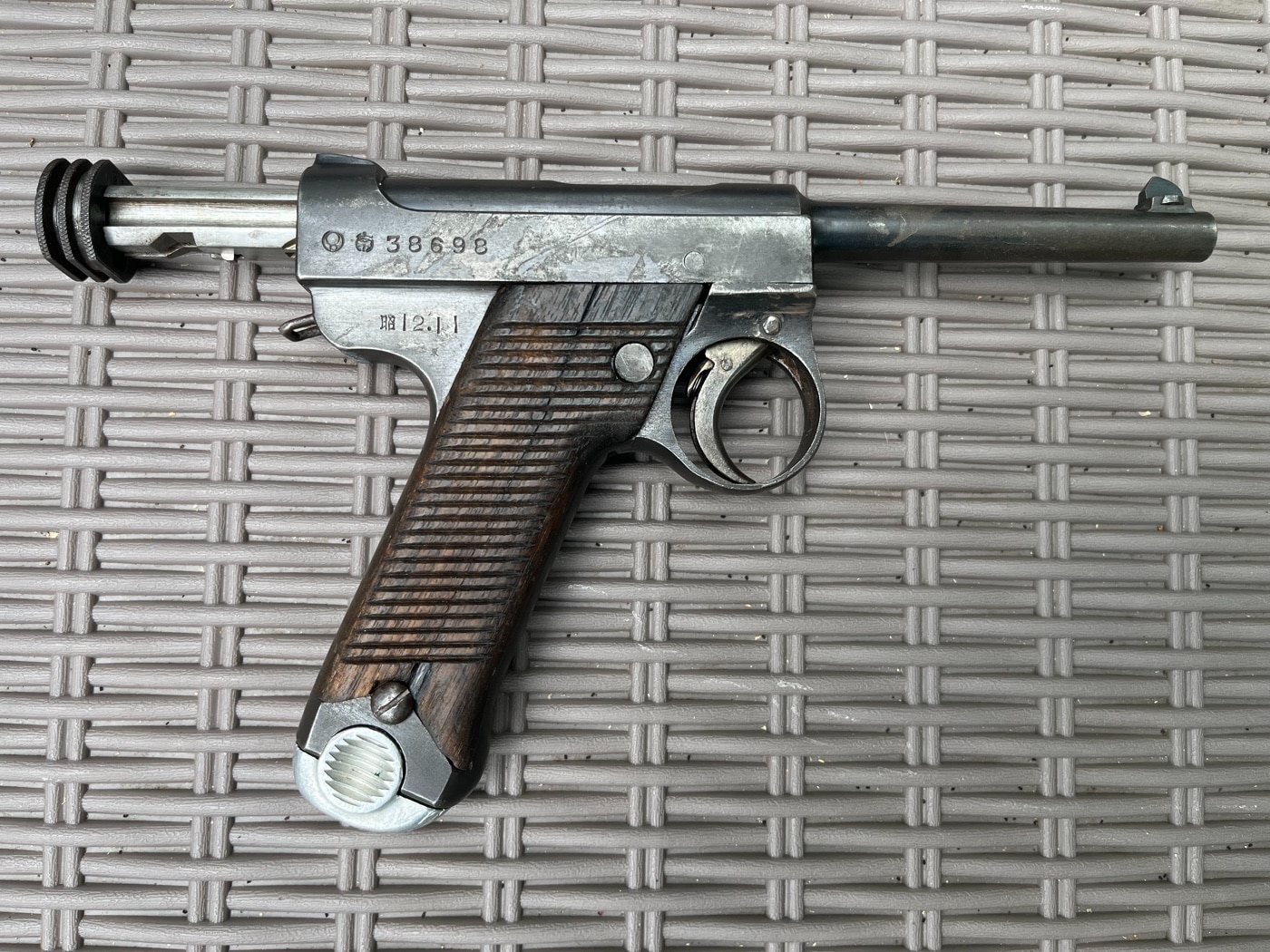
If an inexperienced upstart outfit like the Imperial Japanese Army could slay the great Russian Bear with the unsophisticated ordnance was available at the time, who needs further R&D on infantry weapons, right? Well, no. But that’s hubris and national conceit for you.
Even the more far-sighted planners in the Japanese military establishment opted to put boatloads of yen into capital class warships and military aviation rather than worry overmuch about poor privates in the rear ranks with rusty Arisaka rifles.
Preference for the Blade
And I think there’s a cultural aspect to it. Throughout their feudal history, the Japanese put huge stock in bladed weapons. It’s symbolic, a salute to Samurai tradition meant to inspire martial fervor. It’s also the reason we constantly see images or hear accounts of Japanese officers or NCOs leading suicidal charges while waving some variant of the traditional warriors’ shin gunto sword.
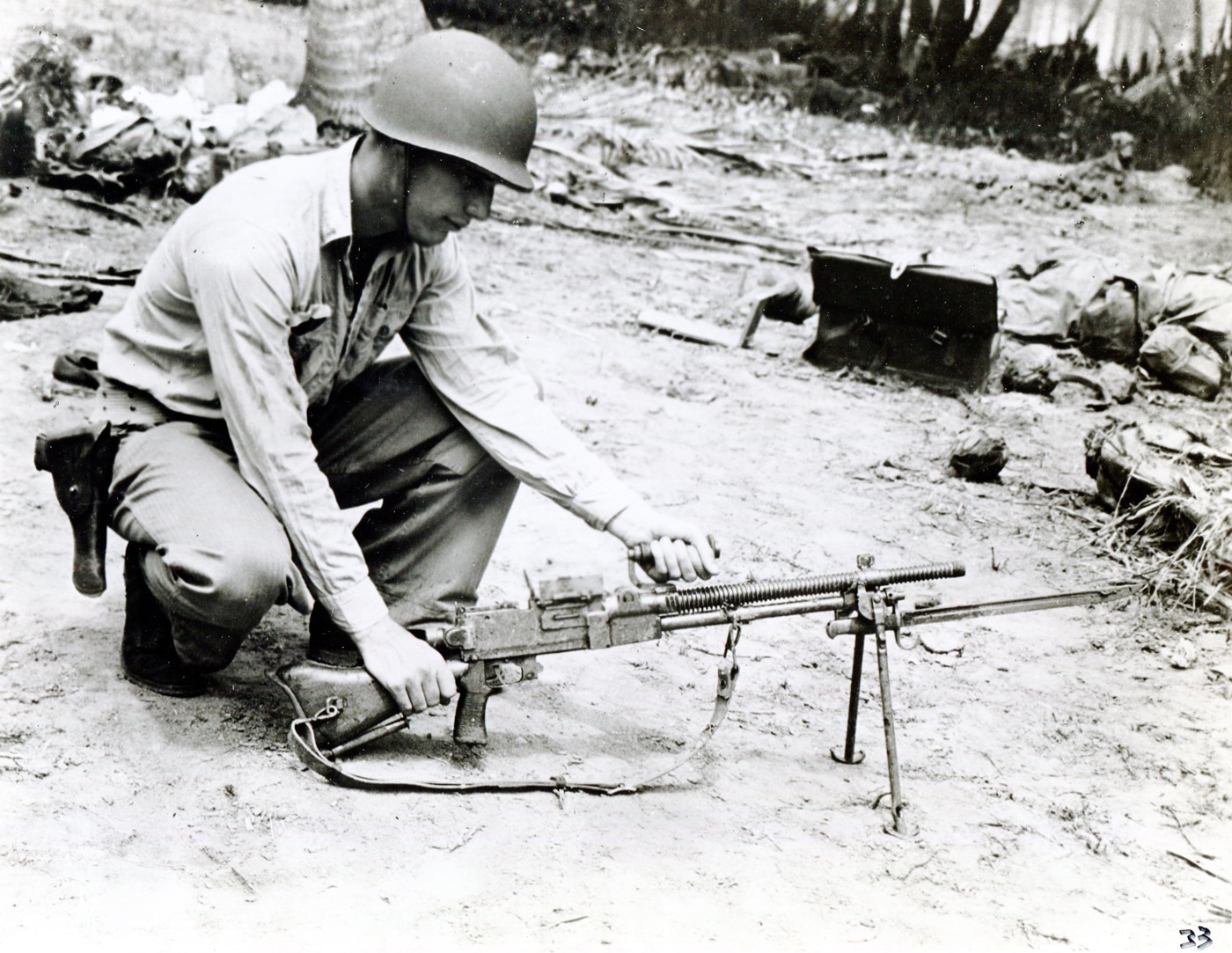
The Japanese Imperial forces were big believers in the bayonet. Doctrine held that the long 16-inch Type 30 bayonet was the primary weapon of the soldier. That helps to explain why they would fit the Type 96 and Type 99 squad light machineguns with a bayonet stud. They were the only nation to do so during the war.
Reluctant Acceptance of Pistols
Given those factors as Japan geared up for world conquest, there just wasn’t much push in the pistol area. The little mouse gun in 8x22mm, introduced into Japanese military service by Colonel Kirijo Nambu in 1914, would suffice.
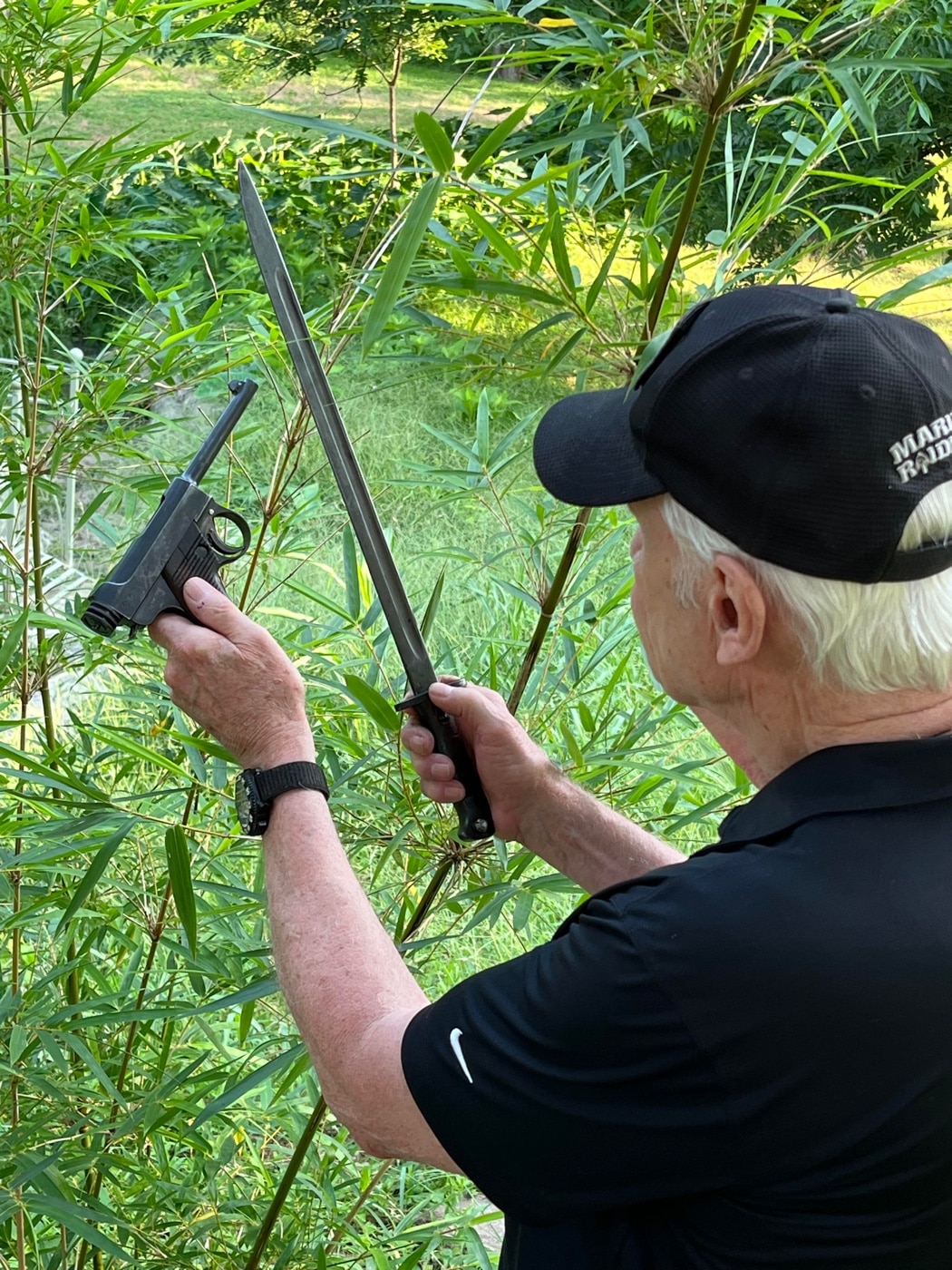
And it mostly did throughout World War II, with the exception of a few tweaks. A grip safety on the original design was eliminated and some manufacturing shortcuts were implemented that eventually led to the Nambu Type 14, with which the IJA went to war with most of the Western world in 1941.
[Be sure to read Dr. Will Dabbs’ article on the Type 14 Nambu pistol.]
There were few visible differences between early Nambu’s and most wartime models. Both variants were found with either fluted or solid cocking handle knobs, and unless the pistol had that grip safety just below the triggerguard and a leaf-type rear sight you’d be hard-pressed to tell one from the other. Some early Nambu’s were fitted with a slot in the backstrap that accommodated a wooden holster/shoulder stock similar to the German C96.
[Ed. Note: Don’t miss Tom Laemlein’s article on the Broomhandle Mausers.]
Another visual clue that you might be looking at a wartime model pistol is an expanded circumference triggerguard on so-called “Kiska” model Nambu’s that Allies encountered in the Aleutian Campaign. That did nothing much more than provide easier trigger access for soldiers wearing thick gloves. And the main action for Japan was shaping up to be over in the Pacific where gloves were mostly irrelevant, anyway.
Desperation Handgun
When things got desperate at the Tokyo Artillery Arsenal late in the war, designers cast back to another pistol design from 1934, called the Model 94, which was clearly a triumph of nationalism over efficiency.
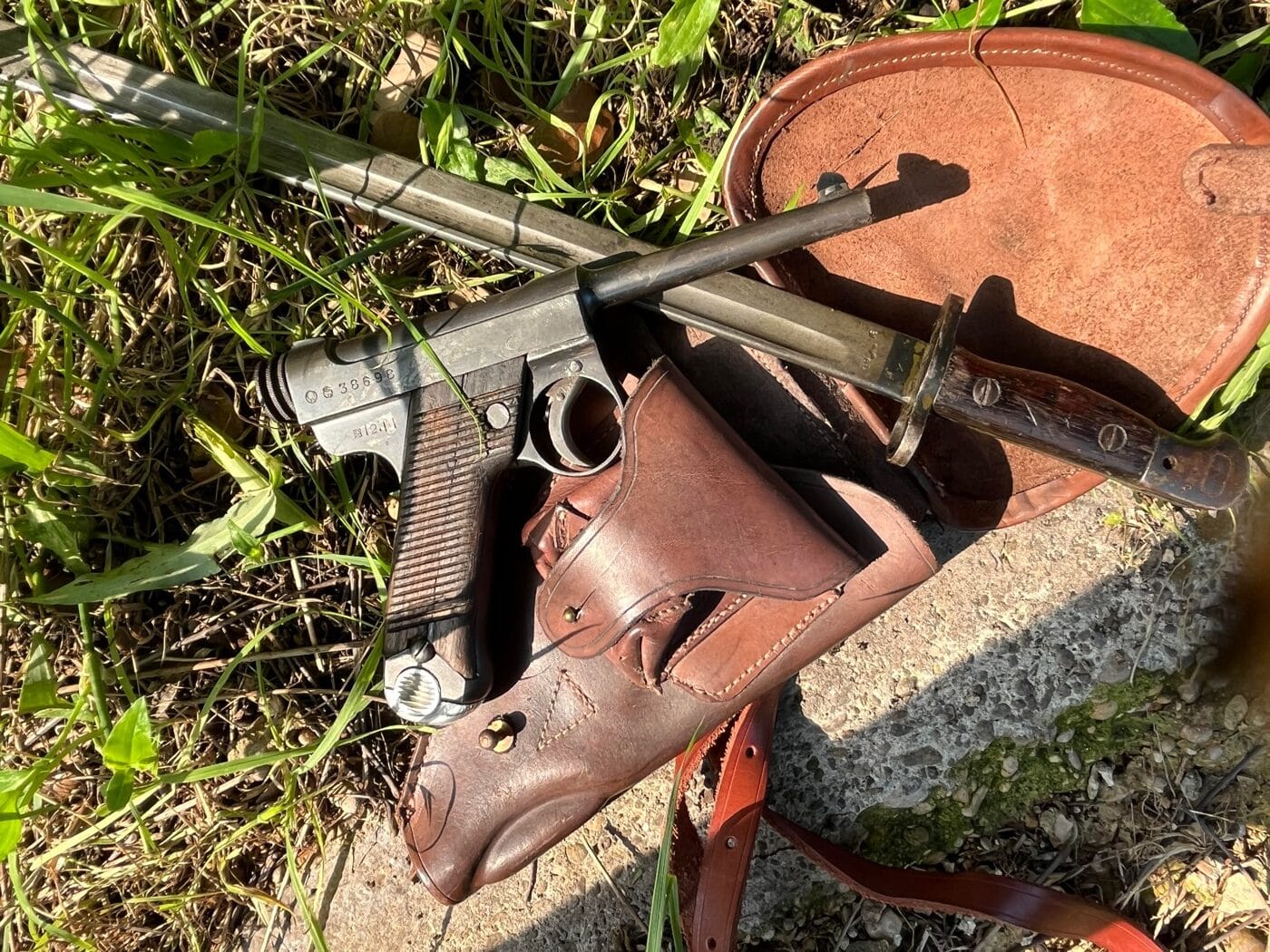
This odd duck was nearly as dangerous to the shooter as it was to an enemy. Chambered to fire the same anemic round as the Nambu, the Model 94 often fired the chambered round before the breech was fully closed. To make things worse, it had an exposed sear that could cause a loaded pistol to fire when someone picked it up carelessly.
It was hardly a late-inning game saver, and the IJA continued to fight with the Type 14 Nambu, the lesser of two available evils.
[You can read more about the Type 94 Nambu in this article.]
The Baggage
The Type 14 pistol is basically a semi-automatic, recoil-operated magazine-fed handgun that fires 8x22mm Nambu cartridges from an eight-round magazine at around 950 feet per second. It features a blade-type front sight and a non-adjustable v-notch rear sight. It’s rated for an effective range of 50 meters, but I’d hesitate to trust that.
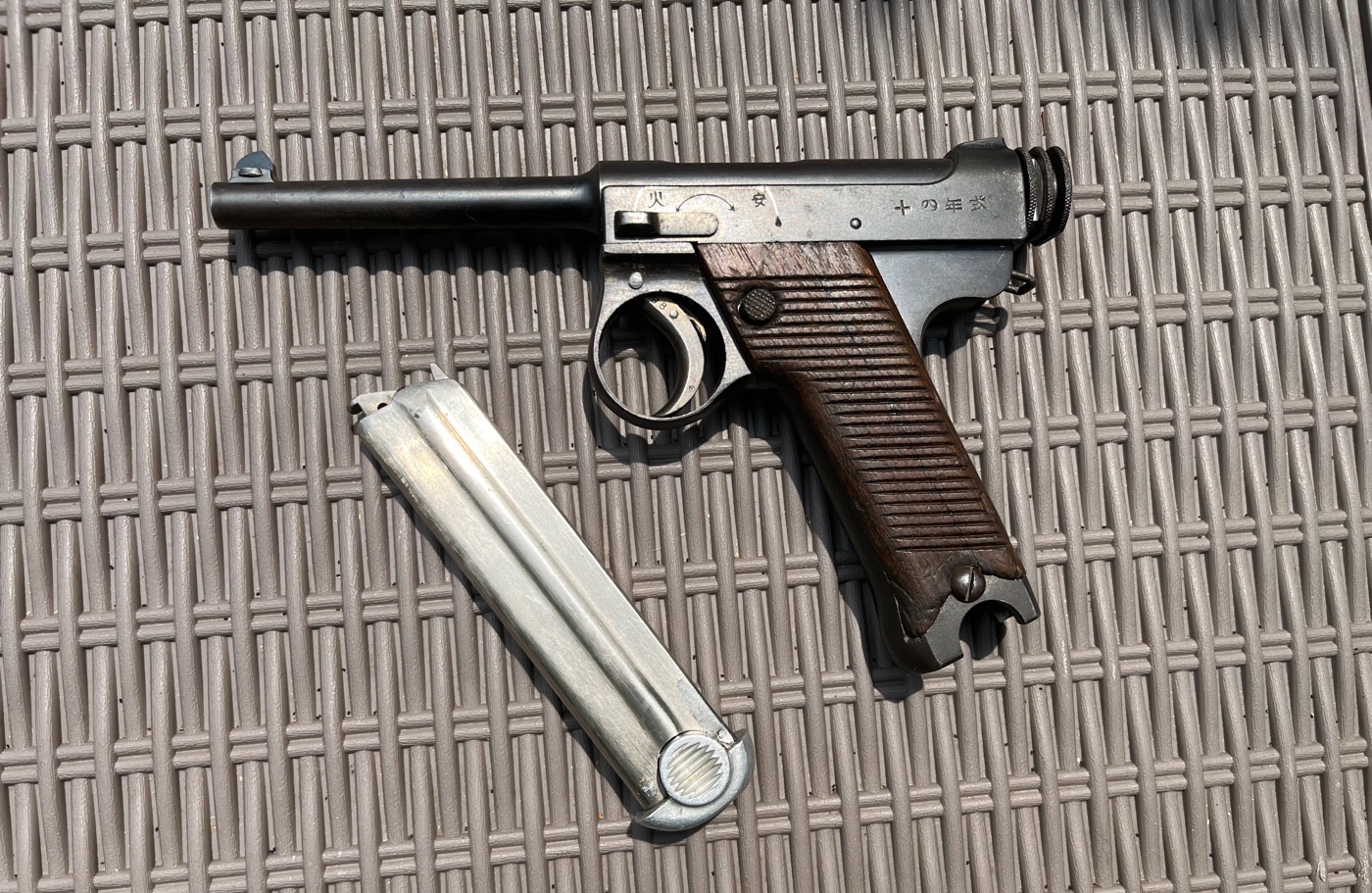
Grips are fluted wood, and the magazine is a nickel aluminum mix. The safety is located on the left side above the trigger housing. Magazine release is button-type also located on the left side just behind the trigger. There is a lanyard loop welded to the pistol frame just below the cocking knob. The Type 14 Nambu weighs 2 pounds empty.
Aside from all the drawbacks, the Nambu just looks retro-cool and exotic. That’s the good news for fans. The bad news comes in the form of ergonomics for the poor troopers who had to fight with the thing.
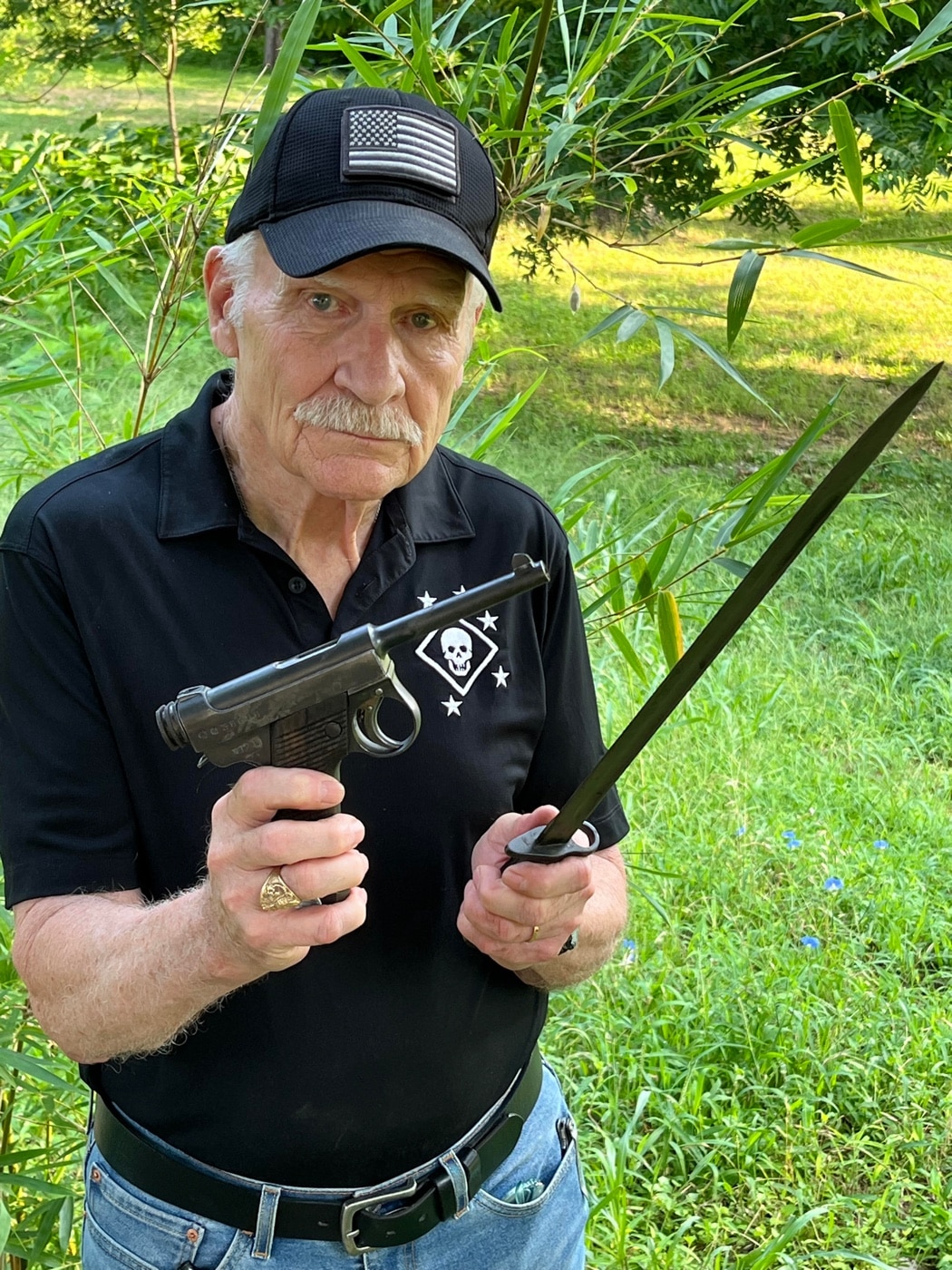
Here’s what they were facing when they drew the Nambu in combat. The pistol’s safety lever is located in a place that precludes operating it with one hand while holding the Nambu. It’s a two-hander going from safe (lever to the rear) to fire (lever forward). And that Luger type rake between grip and receiver forces the shooter to wave the pistol around during reloads to acquire the proper angle and change magazines. The recoil springs along with the magazine follower springs on issue Nambu’s were notoriously weak and subject to failure at the worst times.
Final Thoughts
Over the years, I acquired a lot of Japanese weapons and equipment, including a nice wartime Nambu. No question it looks cool and draws some wonder and comments when I swing open the gun safe, but it’s a frustrating experience. Sadly, I’ve never been able to locate reliable 8x22mm ball ammo that I’d trust to fire through my Nambu on a range.
Editor’s Note: Please be sure to check out The Armory Life Forum, where you can comment about our daily articles, as well as just talk guns and gear. Click the “Go To Forum Thread” link below to jump in!
Join the Discussion
Read the full article here




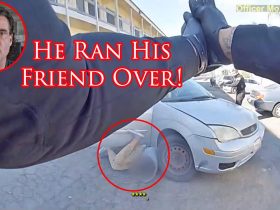
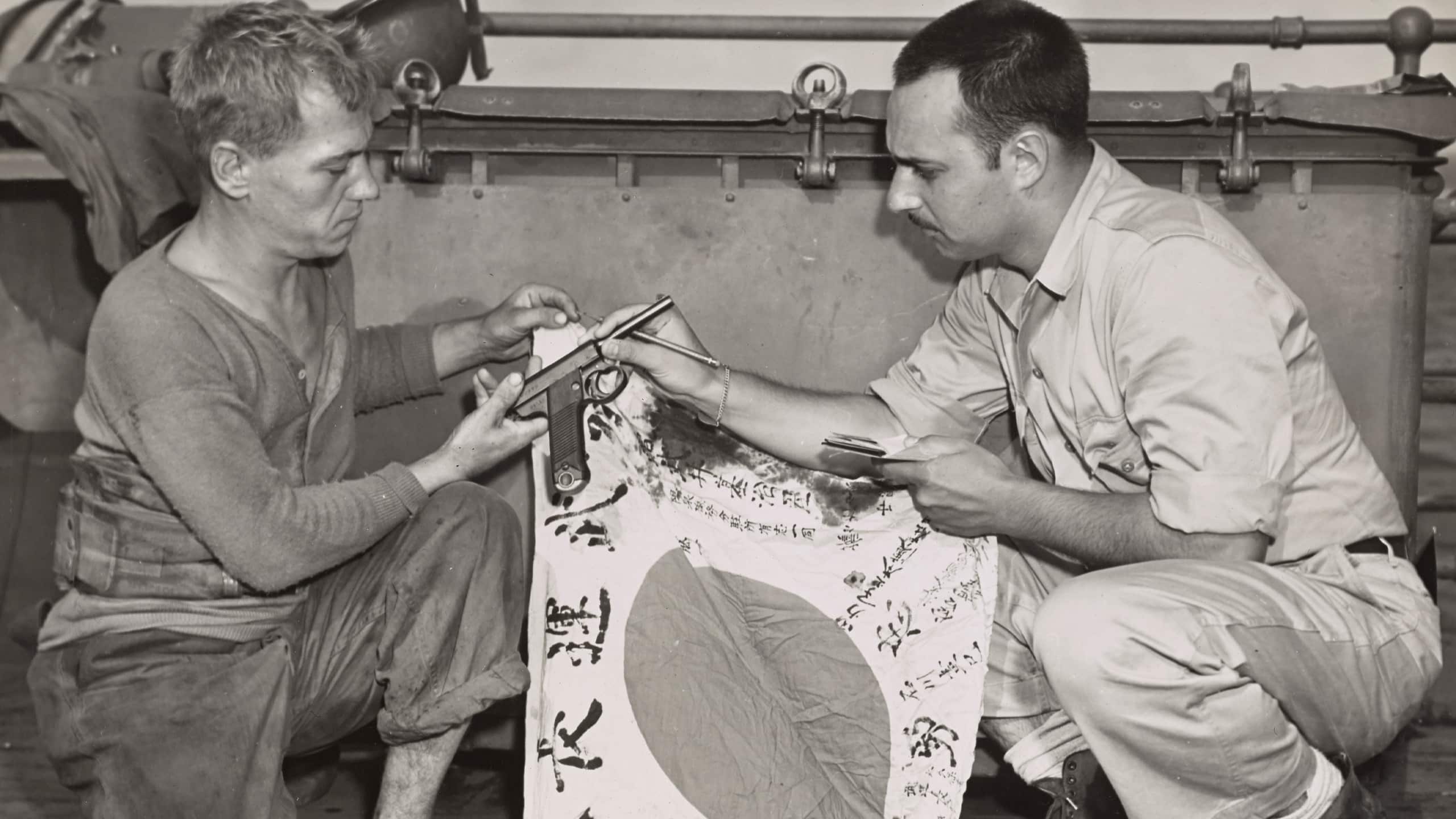






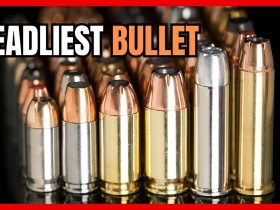

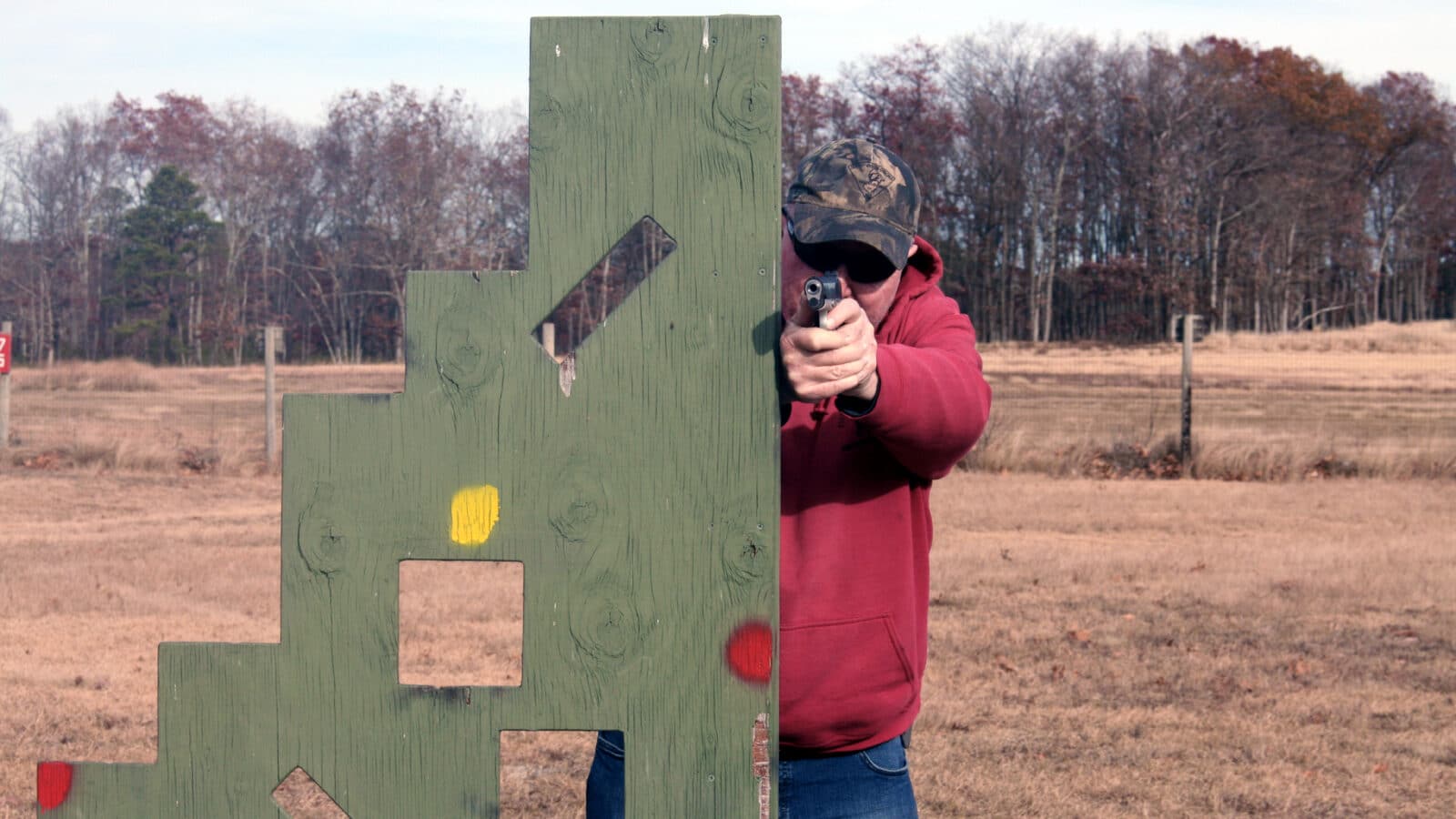



Leave a Reply